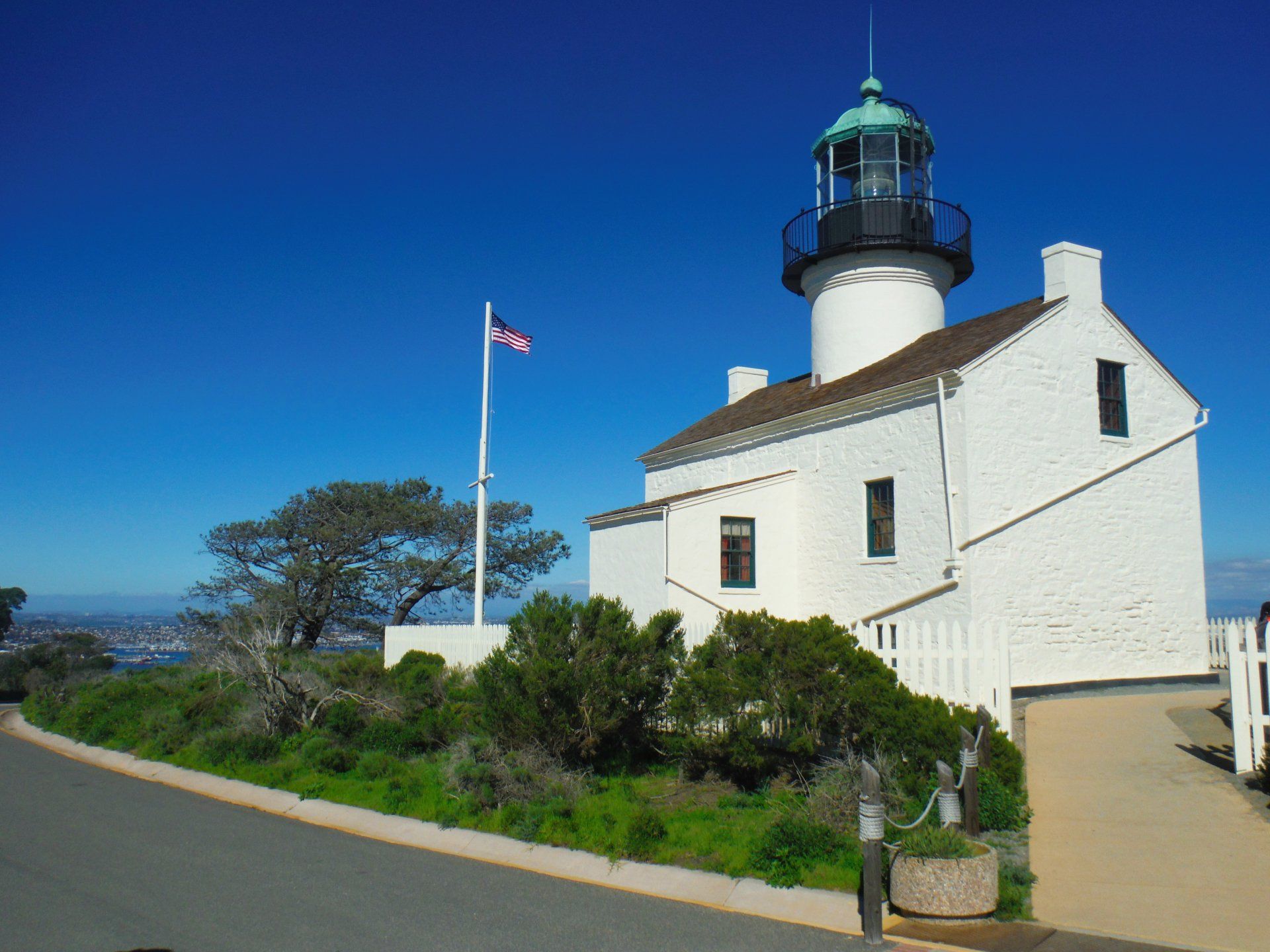
Cabrillo National Monument
Cabrillo National Monument
Point Loma
The park that is home to Cabrillo National Monument and the Point Loma Lighthouse offers breathtaking views of the San Diego harbor and skyline, as well as Coronado and Naval Air Station North Island. On a clear day visitors will have an expansive view of the Pacific Ocean, Tijuana and Mexico's Coronado Islands.



Slide title
Write your caption hereButton
Slide title
Write your caption hereButton
Slide title
Write your caption hereButton
The SD Experience
Cabrillo National Monument is at the southern tip of the Point Loma Peninsula. It commemorates the landing of Juan Rodríguez Cabrillo at San Diego Bay on September 28, 1542. This event marked the first time a European expedition had set foot on what later became the West Coast of the United States. The area encompassed by the national monument includes various former military installations, such as coastal artillery batteries, built to protect the harbor of San Diego from enemy warships. Many of these installations can be seen while walking around the area. A former army building hosts an exhibit that tells the story of military history at Point Loma.
Every year there are a few “Fee Free Weekends” where the park entrance fee is waived for all guests. Other annual events include “Whale Watch Weekend,” “Founder’s Day,” and “Open Tower Day.” “Whale Watch Weekend” occurs in January and features exhibitors and special ranger-led walks and talks as guests look for whales during the annual Pacific Gray Whales migration. “Founder’s Day,” August 25, celebrates the establishment of the National Park Service at Cabrillo National Monument; “Open Tower Day,” November 15, marks the anniversary of the Old Point Loma Lighthouse. The tower at the top of the lighthouse, normally closed to visitors, is open to the public on those two days. The park also has one of the fully restored World War II bunkers open to the public on the fourth Saturday of each month.
Point Loma Lighthouse
In 1851, a year after California entered the Union, the U.S. Coastal Survey selected the heights of Point Loma to be a navigational aid. The crest seemed like the right location: it stood 422 feet above sea level, overlooking the bay and the ocean, and a lighthouse there could serve as both a harbor light and a coastal beacon.
Construction began on the lighthouse in early 1854 and was completed in November 1855. By late summer 1854, the work was done. More than a year passed before the lighting apparatus - a five-foot-tall 3rd order Fresnel lens, the best available technology - arrived from France and was installed. At dusk on November 15, 1855, the keeper climbed the winding stairs and lit the oil lamp for the first time. In clear weather its light was visible at sea for 25 miles. For the next 36 years, except on foggy nights, it welcomed sailors to San Diego harbor. However, the lighthouse's location on top of a 400-foot cliff meant that fog and low clouds often obscured the light from the view of ships.
On March 23, 1891, the flame was permanently extinguished and the light was replaced by the New Point Loma lighthouse at a lower elevation. After boarding up the old lighthouse in 1891, the keeper moved his family and belongings into a new light station at the bottom of the hill, which is still an active light. It can be seen from the Whale Overlook, 100 yards south of the Old Point Loma Lighthouse, or from the tide pool area.